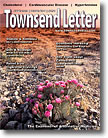| My
Stroke of Insight
by Jill Bolte Taylor, PhD
Viking, Penguin Group (USA) Inc.,
375 Hudson Street, New York, New York 10014
©2008; 184 pp; $24.95 US; $27.50 Canada.
On December 10, 1996, Jill Bolte Taylor,
age 37, had a hemorrhagic stroke. "Within four brief hours,"
she writes, "I watched my mind completely deteriorate in its
ability to process all stimulation coming in through my senses.
This rare form of hemorrhage rendered me completely disabled whereby
I could not walk, talk, read, write, or recall any aspects of my
life." She observed her deterioration and recovery with the
precision and enthusiasm of a scientist. Taylor has a PhD from Indiana
State University Department of Life Science with a research specialty
in neuroanatomy and, at the time of the stroke, held a postdoctoral
research position at Harvard Medical School's Department of Neuroscience.
My Stroke of Insight is about that
December day, her recovery, and more. Her book tells how she found
and retained access to deep inner peace – "Nirvana"
– which she believes resides in the right side of the brain.
Taylor's stroke occurred when a congenital arteriovenous malformation
in her left brain gave way. The left hemisphere of the brain holds
the skills that let us interact with our environment, such as language,
movement, and spatial context. When her language center went off
line, Taylor could not understand speech. Without the detail-oriented,
categorizing left brain, Taylor thought with pictures and relied
on voice tone, nonverbal cues, and relationship patterns to interpret
her environment. In addition, her "brain chatter" with
its perpetual commentary stopped. She experienced a timeless sense
of peace and oneness in the present moment. To observers, however,
Taylor "was quite a mess" on the day of the stroke. "I
was like a newborn unable to make sense of the sensory stimulation
in the physical space around me," she writes.
Despite the stroke's grievous effect, Taylor had two major factors
bolstering her recovery: her own understanding of the brain's plasticity
and the support of her mother, G. G. Even though some of Taylor's
brain cells were irrevocably damaged, she knew that she could retrain
the circuitry to take over lost functions. "Scientists are
well aware that the brain has tremendous ability to change its connections
based upon its incoming stimulation," she explains in her book.
Stimulation propels neurons to interact with other neurons. Without
interaction, neurons die.
Taylor did not wait for speech, occupational, or physical therapy.
She and her mother began work immediately. Her mother broke down
tasks into steps, as if teaching a very young child. "It was
as if I had an infant brain again," Taylor writes, "and
had to learn virtually everything from scratch. I was back to the
basics. How to walk. How to talk. How to read. How to write. How
to put a puzzle together. The process of physical recovery was just
like stages of normal development." With patience, encouragement,
and plenty of sleep (her brain's "filing time"), Taylor
regained access to what she still knew and forged new brain circuitry
for what she needed to relearn.
A little over two weeks after the stroke, surgeons removed a golf-ball-sized
blood clot from Taylor's left brain. A few weeks later, her brain
"chatter" reappeared. At this point, Taylor made a conscious
decision to retain her right-brain perspective and values as much
as she could. She did not want her newly discovered sense of oneness
to be overrun by left-brain judgments, arguments, and fears. She
paid attention to her emotional responses to her left brain's chatter.
Being a neuroscientist, Taylor knew that the chemical response to
an automatic emotional response from the limbic system floods the
body, then dissipates within 90 seconds. Any negative emotion that
lasts longer than 90 seconds is the result of negative self-talk
and storytelling by the left brain.
Taylor began to tend to her thoughts as if they were weeds or flowers
in a garden. Whenever her left brain started chattering messages
that caused prolonged negative emotional responses, Taylor diverted
her attention to some fascinating project or joyful subject; or
she used positive affirmations. "My stroke of insight,"
she explains, "is that at the core of my right hemisphere consciousness
is a character that is directly connected to my feeling of deep
inner peace. It is completely committed to the expression of peace,
love, joy, and compassion in the world. The more conscious attention
we pay to any particular circuit, or the more time we spend thinking
specific thoughts, the more impetus those circuits or thought patterns
have to run again with minimal external stimulation."
Jill Bolte Taylor was able to walk, speak, drive a car, even give
a brief talk at a conference within months of her stroke; but walking
smoothly, reading, doing arithmetic, and relearning the language
of neuroanatomy took longer. Taylor did not consider herself fully
recovered until eight years after the stroke. Throughout that time,
she noticed "significant improvement in [her] brain's ability
to learn and function."
Taylor says, "No two brains are absolutely identical in their
structure, connections or ability to recover [from a stroke]."
Her own experience, however, indicates that the medical community
does not always know how to communicate with stroke patients or
how to help them recover. The community also tends to underestimate
the brain's ability to adapt and form new circuits.
My Stroke of Insight is a gift,
a gift to practitioners and family members who wonder how to help
stroke patients, and to anyone who seeks a better understanding
of the brain and balanced-brain living.
|



![]()
![]()
![]()

